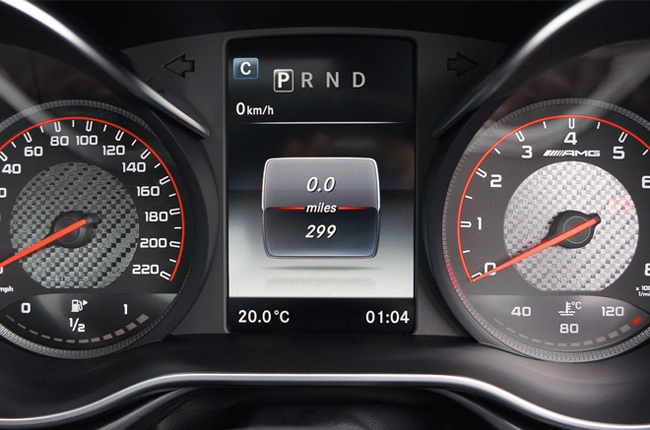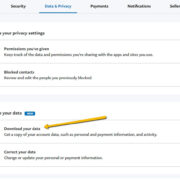When you’re in the market for a new vehicle, it’s natural to expect it to be as “new” as possible, with the odometer reading near zero. However, some miles are usually clocked during the manufacturing and delivery process. Understanding the acceptable range of miles and why they are present can help you ensure that you drive off the dealership lot with confidence in your new purchase.

Acceptable Delivery Mileage
The number of miles on a new car right off the lot can vary. Typically, customers expect a new car to have less than 100 miles.
Detailed Introduction
A brand new car should have very few miles on the odometer. However, because cars need to be driven off the production line, onto delivery trucks, off the trucks, and around the dealership for positioning and prep work, some miles accumulate.
Detailed Steps
To understand what’s acceptable, follow these guidelines:
- Research Manufacturer Norms: Different manufacturers may have different standards. Familiarize yourself with these norms for the brand of car you are interested in.
- Ask the Dealer: Inquire with the dealership about their specific mileage policy for new vehicles.
- Inspect the Odometer: Check the car’s odometer during the test drive or inspection and raise concerns if the mileage seems high.
- Vehicle History Report: If possible, obtain a report to reassure yourself that the car hasn’t been misused for test drives or as a demo vehicle.
Summary
While it is reasonable to expect less than 100 miles, some vehicles may have slightly more due to lengthy test-drives or transportation. This doesn’t necessarily mean the car isn’t new, but always confirm with the dealership on why the mileage is what it is.
Pre-Delivery Test Drives
Dealerships may conduct pre-delivery test drives to ensure everything is functioning correctly.
Detailed Introduction
Pre-delivery inspections involve short test drives to check for defects or issues that must be addressed before sale.
Detailed Steps
- Inquire About Pre-Delivery Inspections: When you visit the dealership, ask about their pre-delivery process.
- Understand Mileage Implications: Discuss how many miles may be added to the car as a result of this process.
- Check Documentation: Review the pre-delivery inspection sheet to confirm the car was checked properly.
Summary
Pre-delivery test drives are standard practice and ensure that your new car is in perfect working order before you take ownership. However, test drives should be relatively short, adding minimal mileage to your vehicle.
Transportation Distance
The distance your car has been shipped can affect its initial mileage.
Detailed Introduction
If your car has been manufactured far from your dealership, it has likely traveled a considerable distance to get to you, adding a few more miles to the odometer.
Detailed Steps
- Ask About Origin: Find out where your car was manufactured and how it was transported to the dealer.
- Transportation Modes: Determine if your car has been driven or shipped via carrier—cars transported on trucks will have fewer miles.
- Compare with Other Units: If possible, compare the mileage of your car against others in the dealership to gauge normal transportation mileage.
Summary
Long-distance transportation can contribute a few additional miles. Opt for cars transported mainly via carrier to minimize these extra miles.
Dealer Preparation
Detailed Introduction
Dealer preparation includes a final check and detailing which may involve some driving within the dealership premises.
Detailed Steps
- Inquire about Dealer Prep: Ask what the dealer preparation involves and if it includes driving the vehicle.
- Observe: If possible, watch how cars are moved around the lot during your visit.
- Review Dealer Prep Details: Ask for a detailed account of what was done during the dealer prep of your new car.
Summary
Dealer preparation can account for a few miles added to your car. However, it’s usually minimal and ensures the car is spotless and ready for delivery.
For the sake of brevity, only four examples have been provided. If a guide requires further solutions or tips, additional content can be developed, such as “Dealer Trades,” “Demo Vehicle Awareness,” “Consumer Test Drives,” “Seasonal Considerations,” “Model Popularity,” “Factory Testing,” “Extended Storage,” “Additional Dealer Services,” and “Post-Manufacture Upgrades.”
Conclusion
The number of miles on a new car may vary slightly based on a few logistical and preparatory factors. By understanding these factors, you can set realistic expectations and feel more at ease about the brand-new status of your vehicle. Remember, a little homework and the right questions can go a long way in ensuring you’re completely satisfied with your new purchase.
FAQs
Q: Is it okay if my new car has over 100 miles?
A: While most new cars will have less than 100 miles, sometimes they may have slightly more due to shipping distance or dealership exchanges. If the mileage is significantly higher, it’s crucial to get a clear explanation from the dealer.
Q: Can I request a new car with fewer miles?
A: Yes, if the mileage on your new car seems excessive, you’re within your rights to ask if there is a comparable car available with fewer miles or to understand the reason for the higher mileage.
Q: Should I be concerned if my new car has more miles than expected?
A: Not necessarily. If the dealer provides reasonable explanations for the mileage, such as distance of transportation or dealership trading, it should not be a cause for concern. However, if you feel uncomfortable, ask for more details or consider another vehicle.









